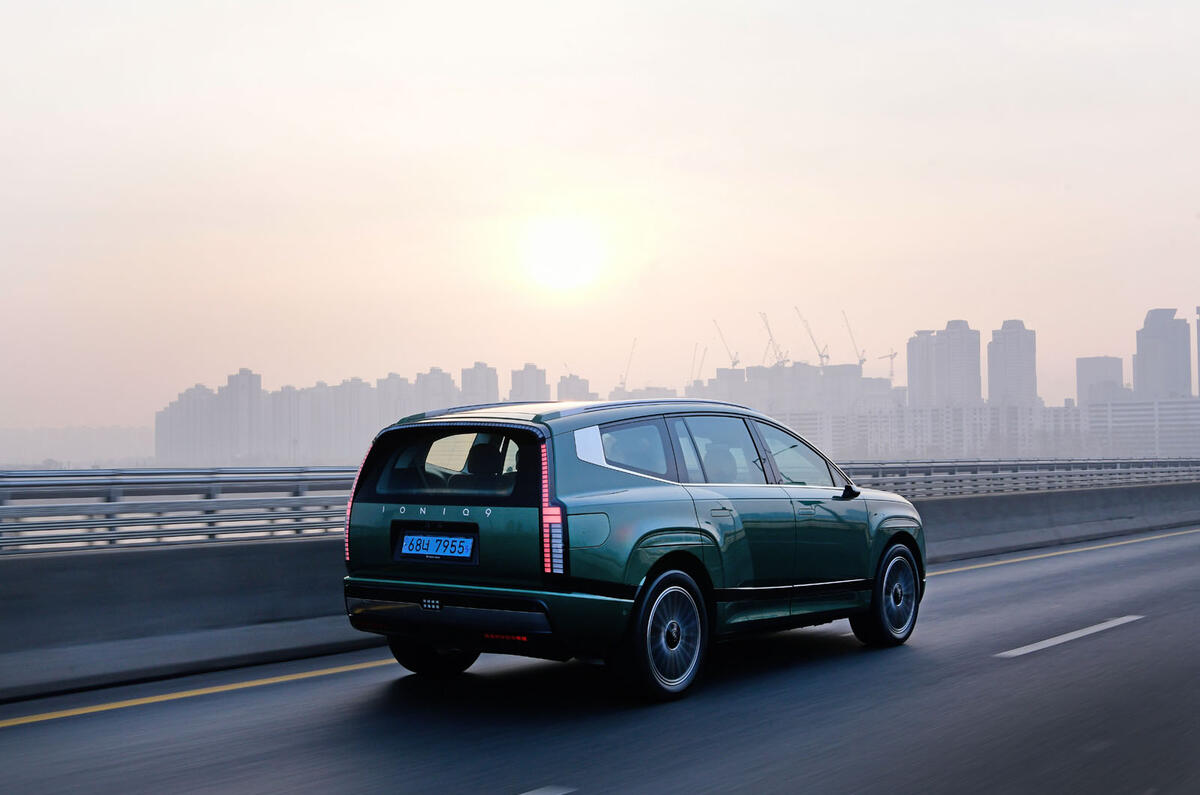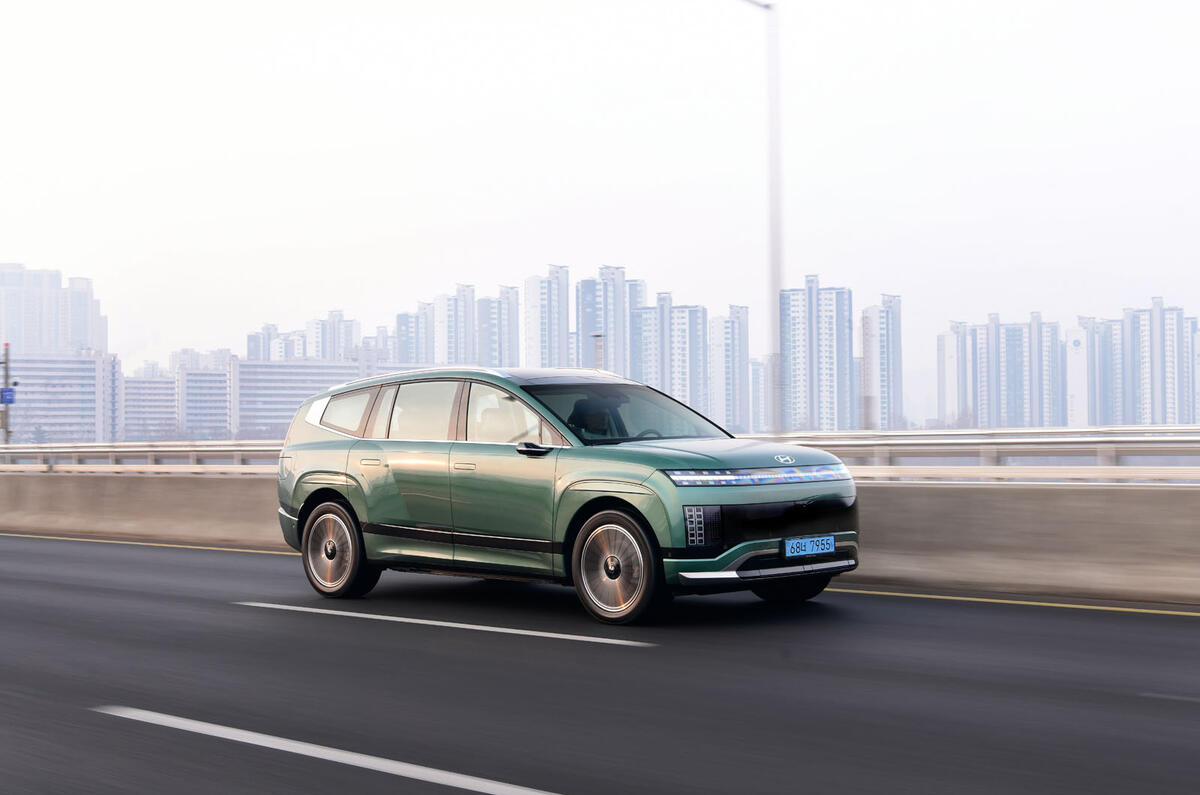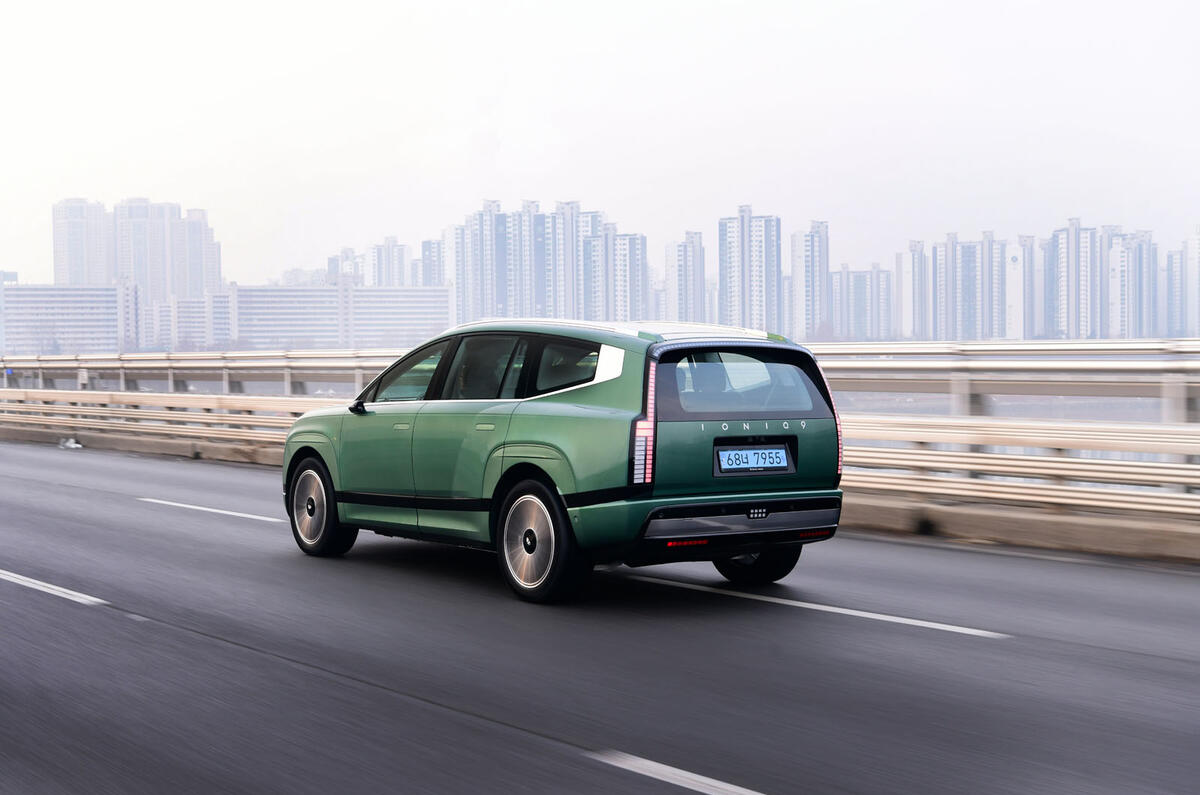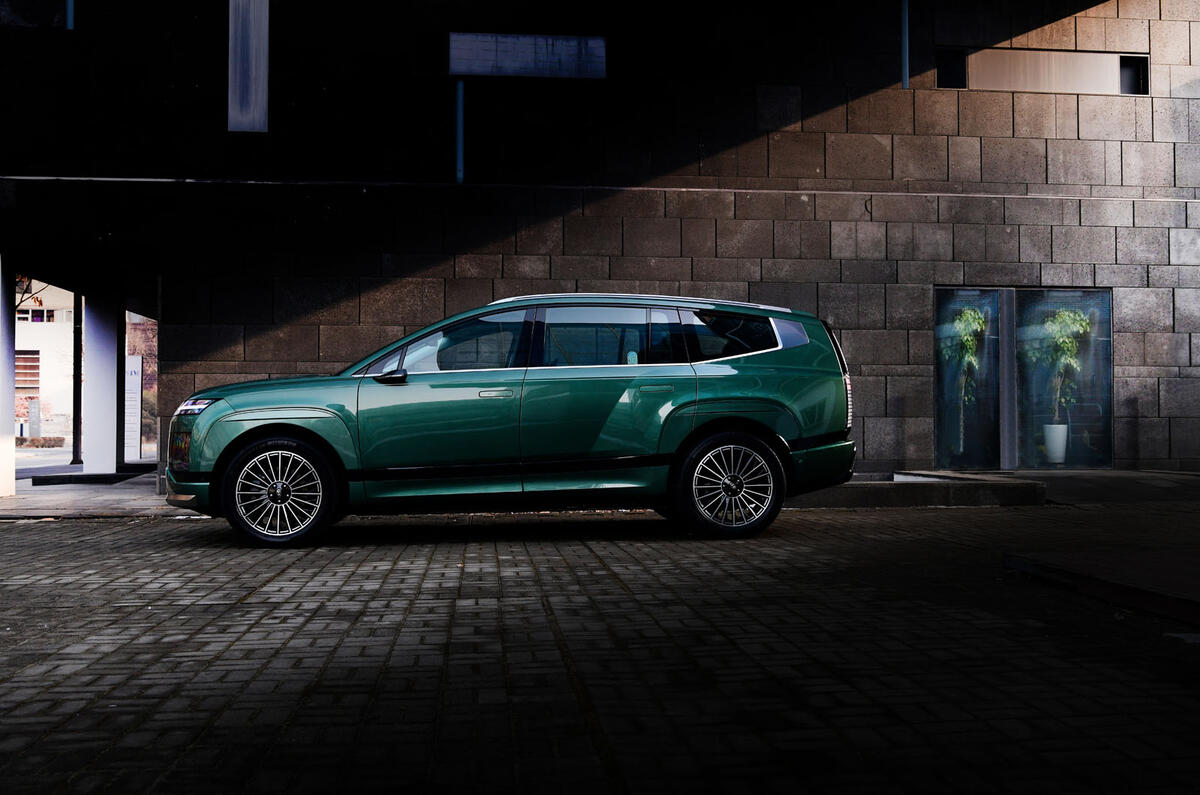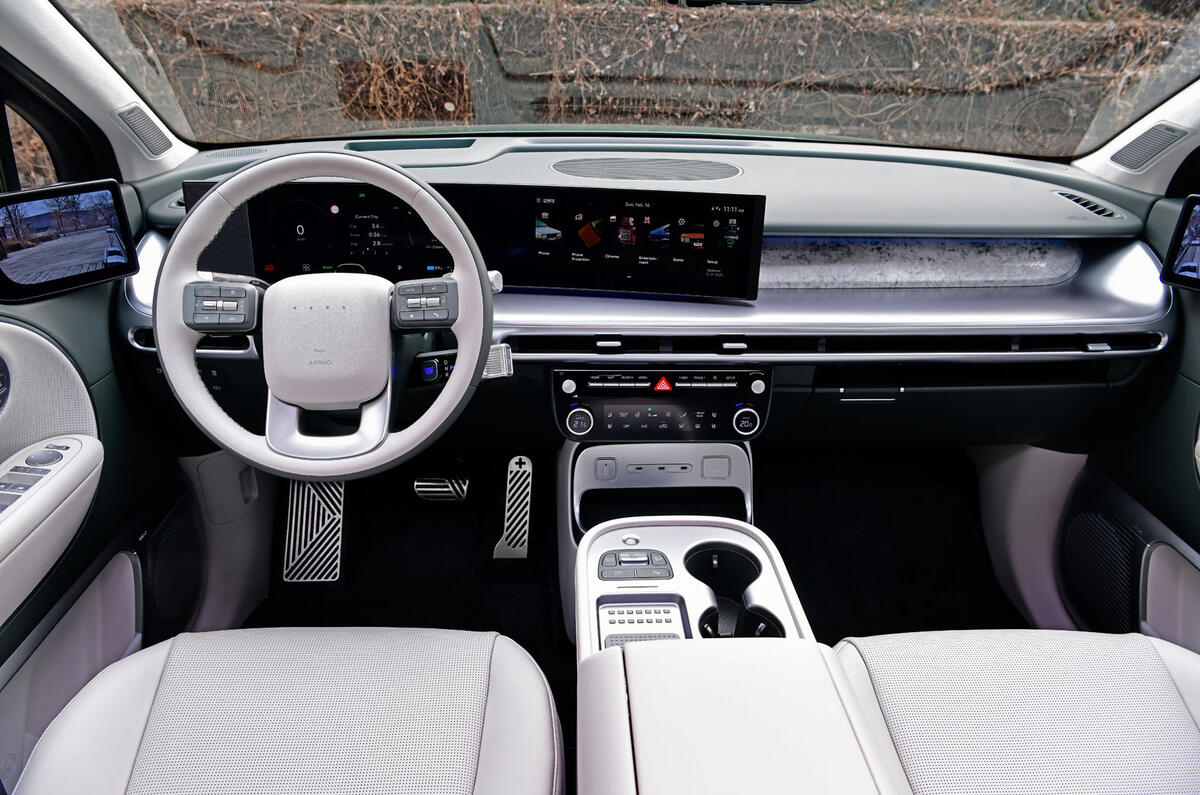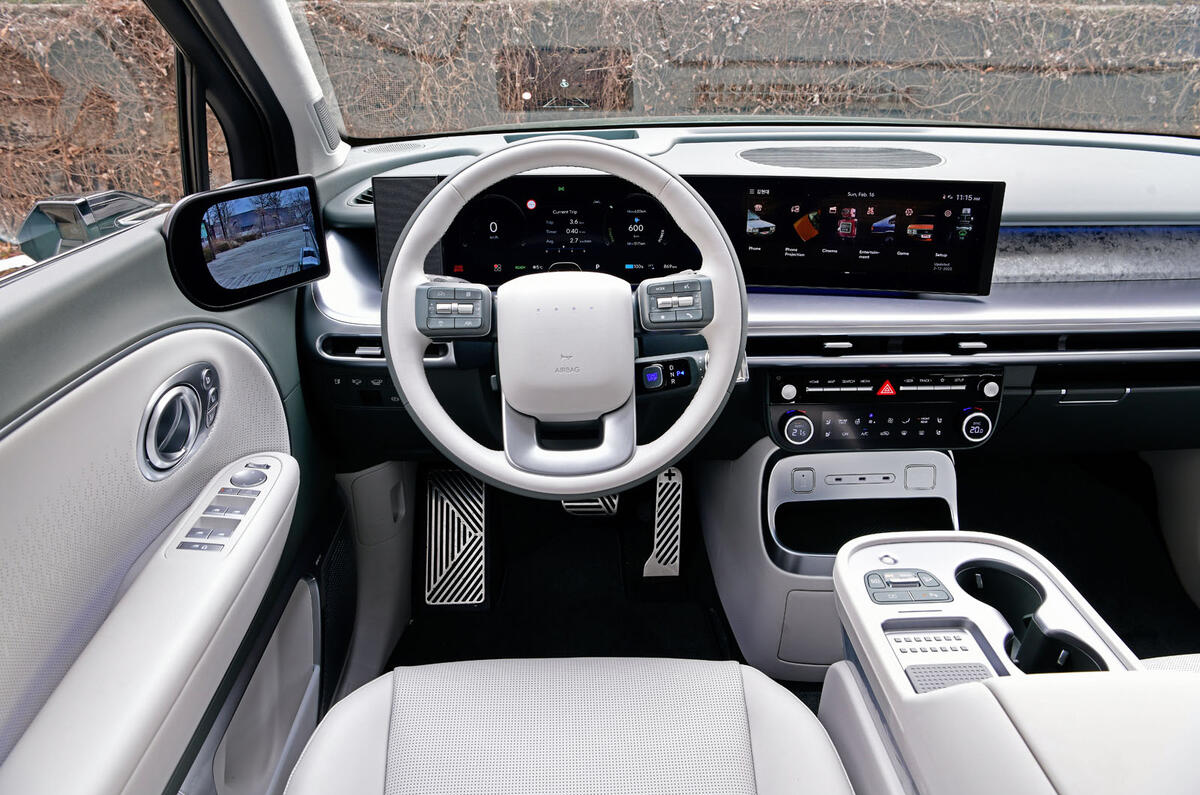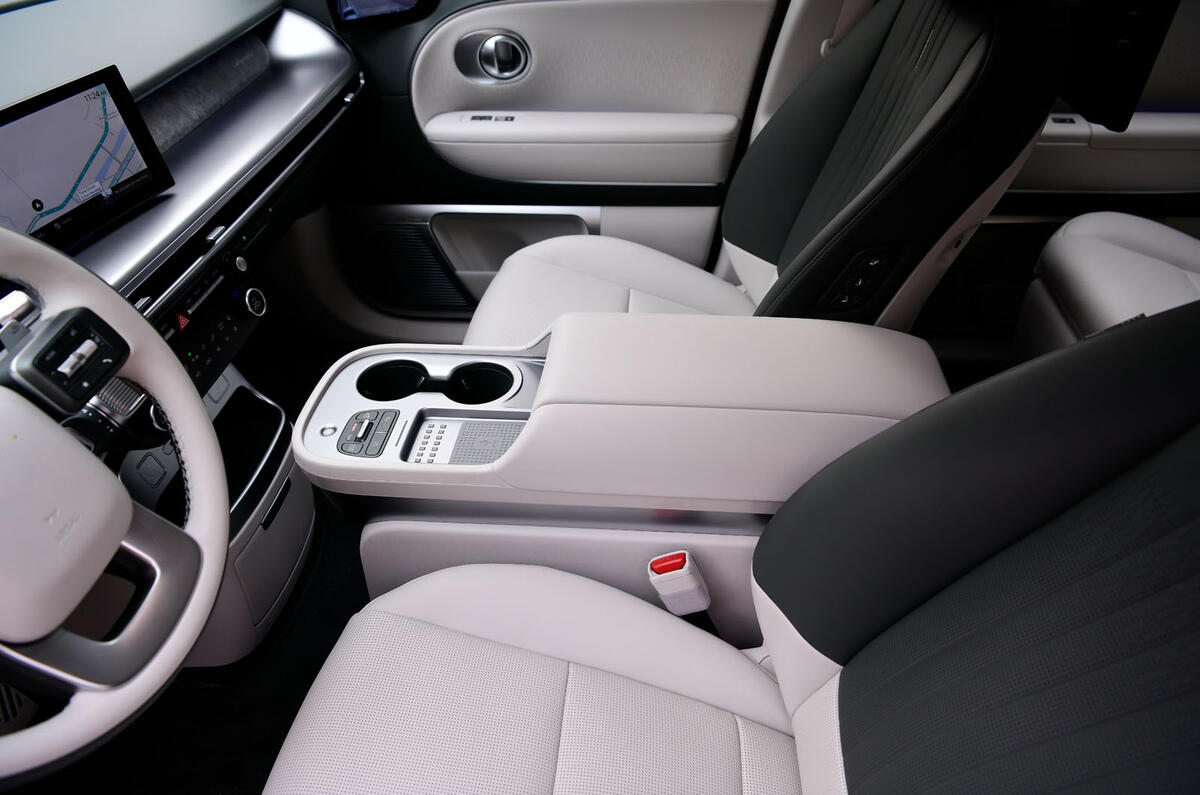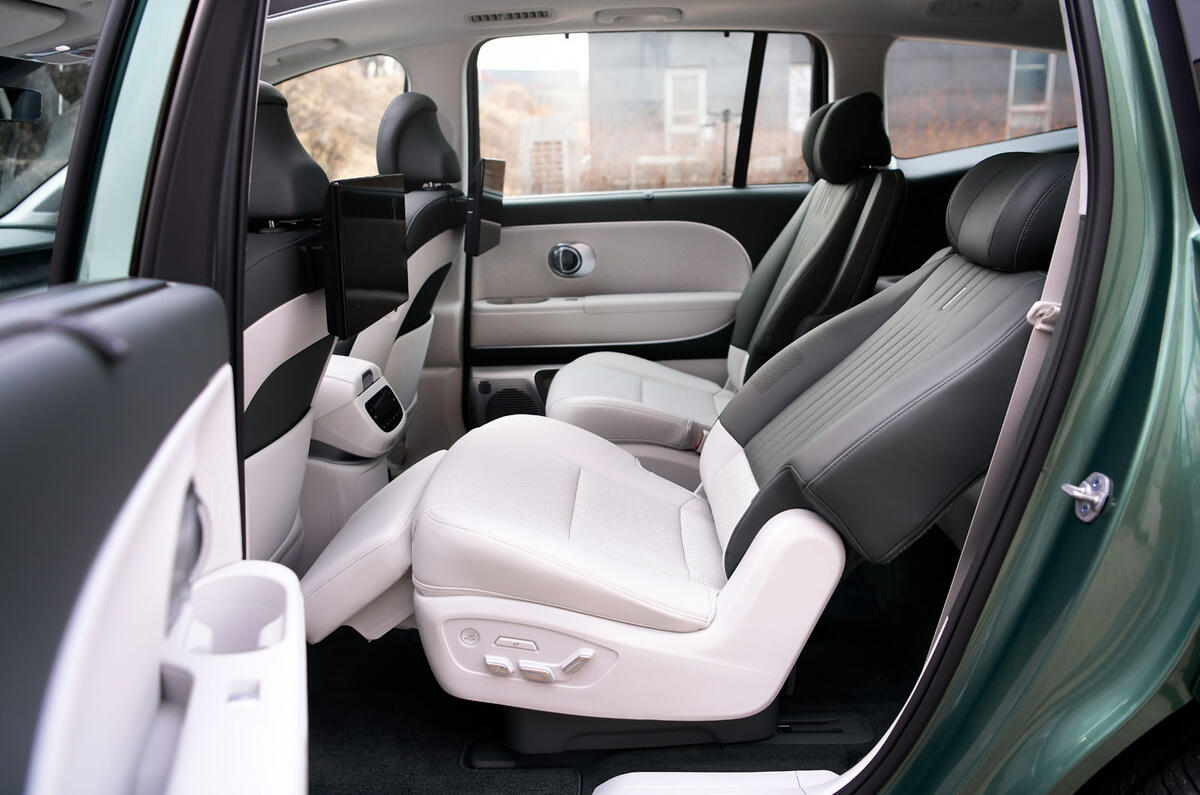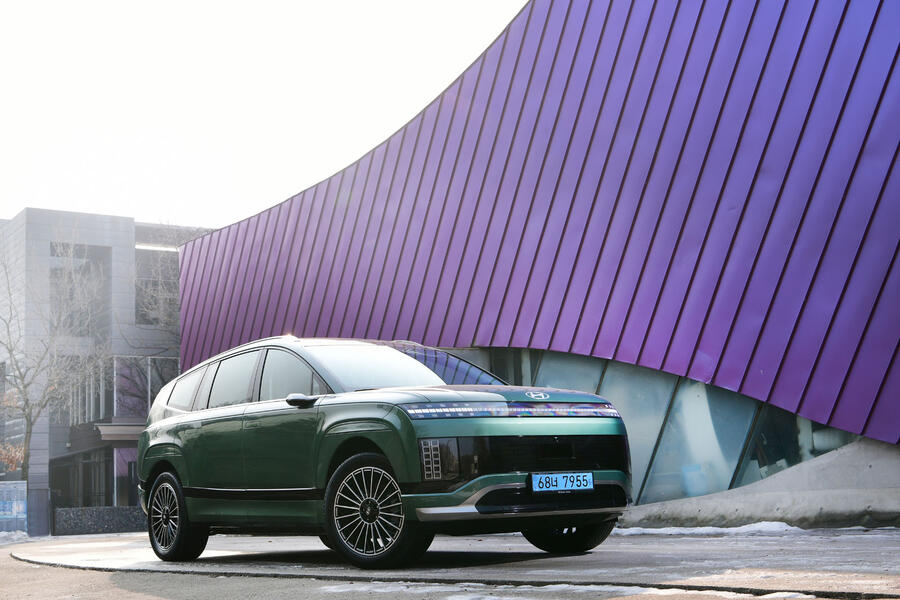When the Ioniq 9 reaches the UK seven seats will be standard, but in top-spec Calligraphy trim you can opt to turn the machine into a six-seater by swapping the second-row bench for a pair of plush seats that can swivel 180deg when stationary to turn the rear into a proper mobile lounge.
Yes, promising an EV with a ‘mobile lounge’ interior has become a bit of a car design cliché, but the Ioniq 9 really does get close to it. Thanks to that elongated roofline it’s properly vast in there, especially with the large panoramic roof letting in so much light.
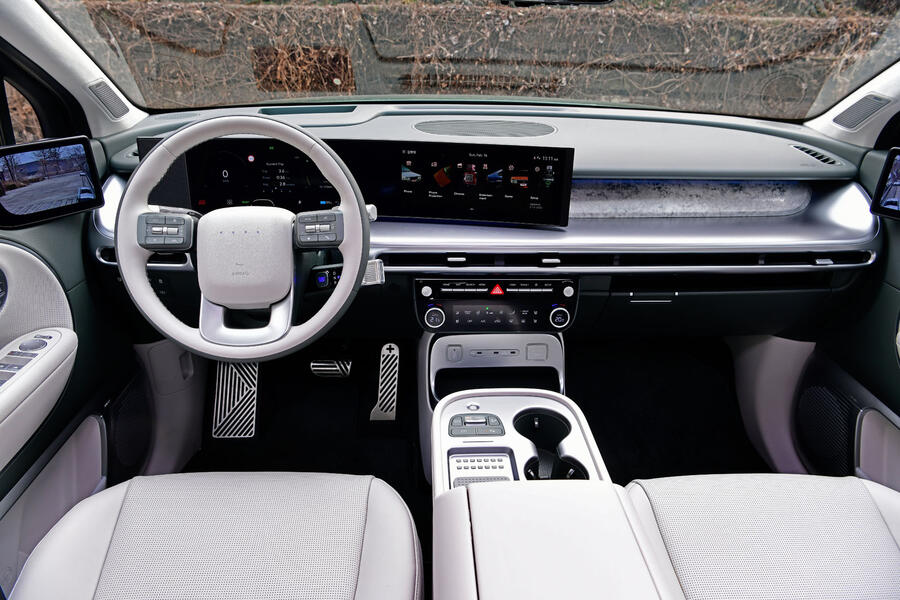
My test car came in six-seat form. There was plentiful head and leg room in both the second and third rows, and gosh is it comfortable back there.
It also had large touchscreens for the second-row seats (unlikely to be offered in the UK sadly), and at a coffee stop I dutifully climbed in the back to film a video for social media – of me streaming the Autocar YouTube channel on the screen, naturally. Through a combination of supportive seats, jet lag and Matt Prior’s dulcet tones, it would have been oh so easy to nod off…
Our test car didn't have the swivelling seats, and while it's an option unlikely to be used much, you can see just how it could open up the interior. There's also a clever moving storage console, making it a very adjustable and usable space.
Even with the rearmost seats in place, there’s a large 620-litre boot; fold them down and there’s 1323 litres of cargo capacity.
It’s plenty spacious and comfortable up front, too. The driving position is commanding and high, and with the sculpted bonnet and flat rear end, visibility is good all round.
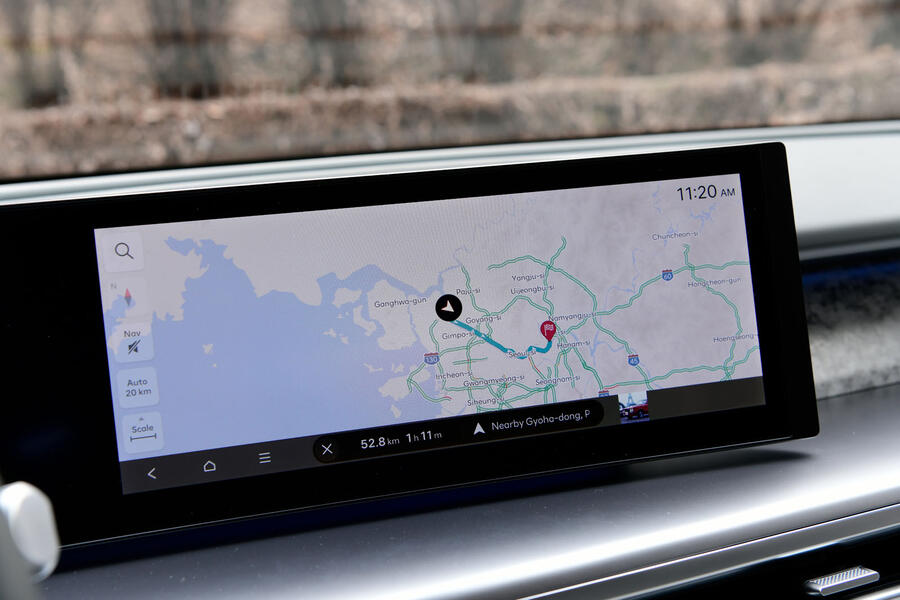
The dashboard will be familiar to anyone who has driven a new Hyundai recently, with the touchscreen and digital instrument display complemented by a decent array of physical buttons and steering wheel controls.
The infotainment system is the latest version of that offered on other Ioniqs, and it’s well thought through: particularly pleasing was the remaining range indicator, which showed average but also best- and worst-case scenarios.
There’s a large centre console between the front seats and plenty of storage space. The materials used for the interior trim all feel good quality and there’s a fancy Bose stereo system. Much like the EV9, you can see the Ioniq 9 turning some heads among potential buyers of more prestigiously badged SUVs.




